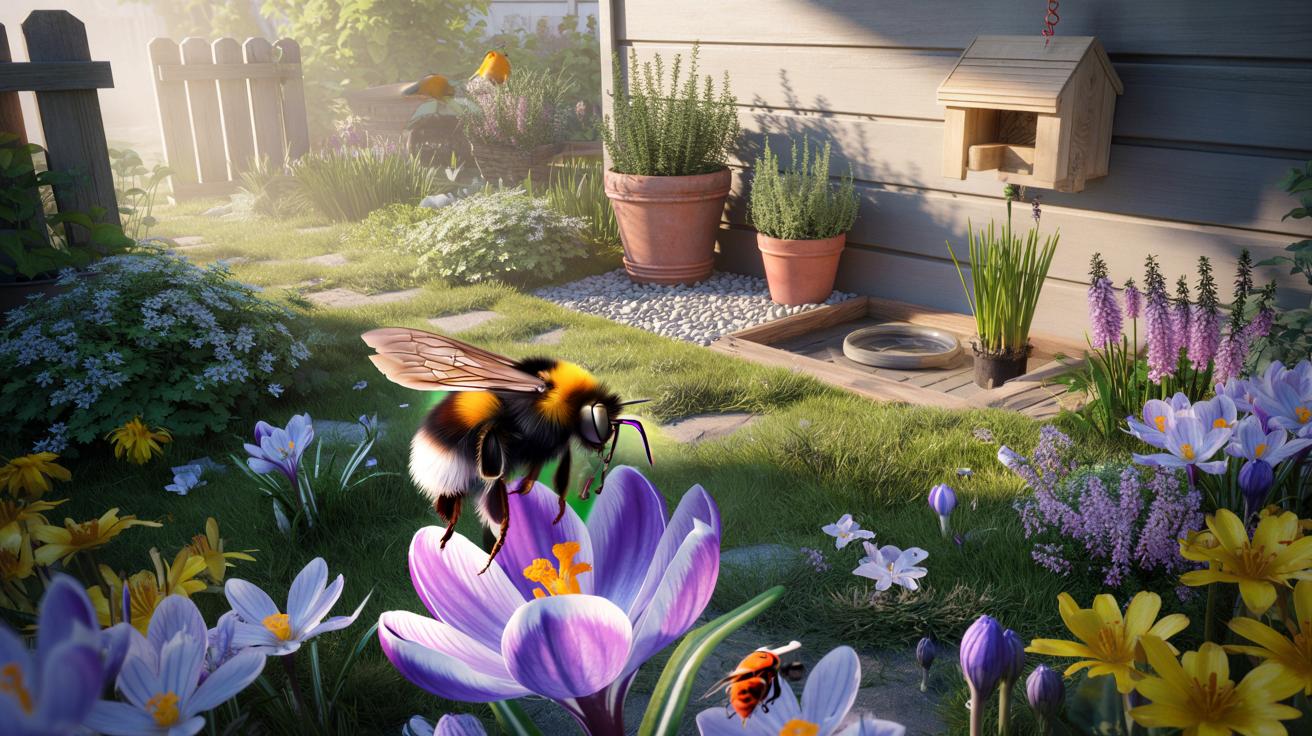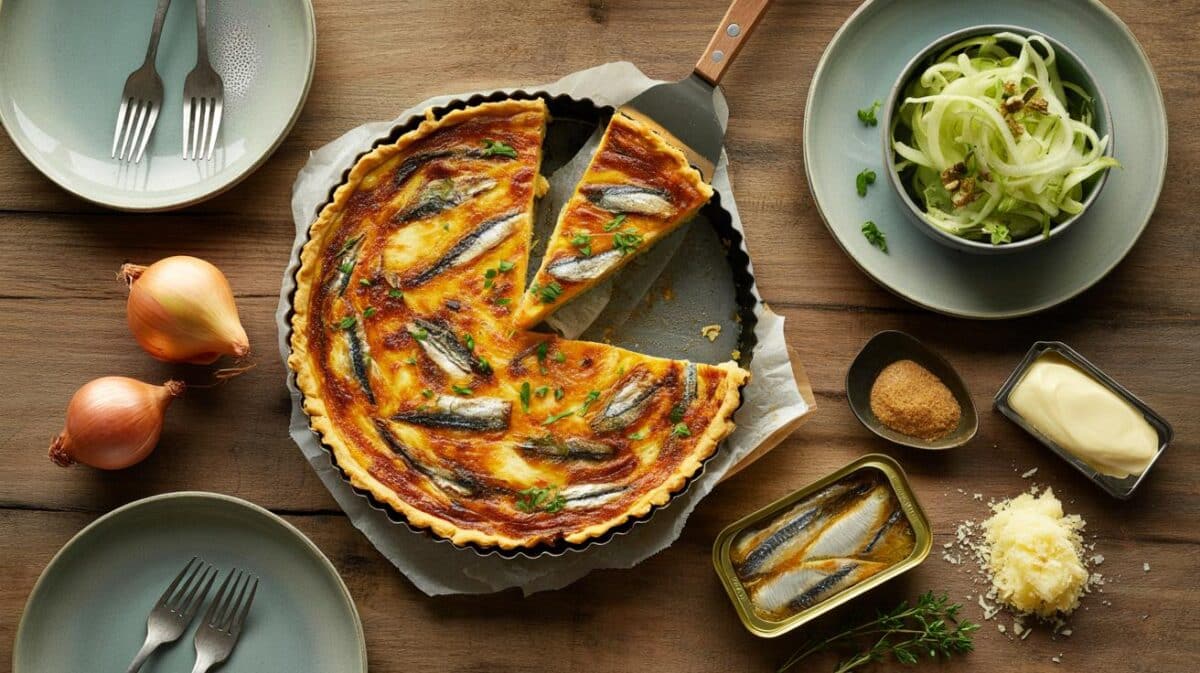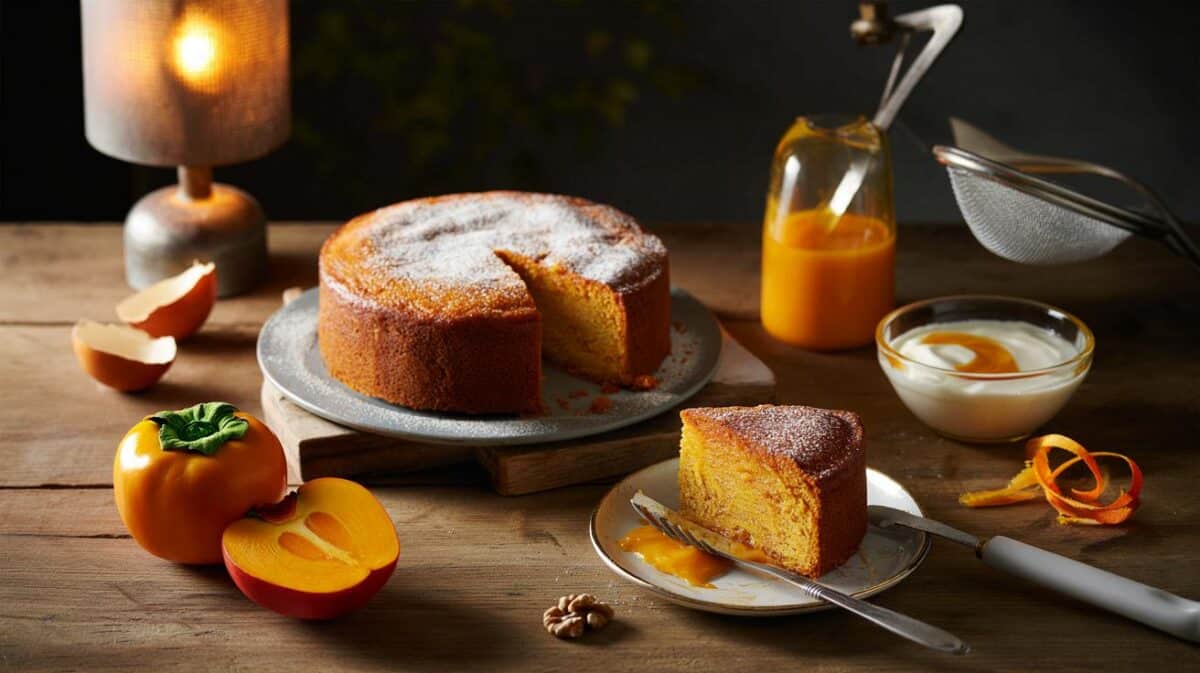Yet the smallest city garden can flip the script. A balcony pot, a scruffy verge, the forgotten corner by the shed. That’s where a season can be rescued.
It was a bright March morning, the kind that makes you believe everything is starting again. I watched a big, sleepy bumblebee queen zigzag low over the lawn, nosing the soil like a detective looking for clues. She hovered at a clump of crocuses, took a drink, and moved on, as if time had a hand on her back.
*The garden hums before you see it.* A robin shouted from the fence. Someone down the road fired up a mower. A light frost still held the shadows. The bee kept searching. It starts at ankle height.
Why spring is the make-or-break season for bees
Spring is when queens stake the year. They’ve survived winter on dwindling reserves, then they launch into flight and need instant fuel. Nectar for energy, pollen for protein, and a snug spot to build a brood. Miss that window by a week or two, and a colony never begins. Miss it by a month, and the garden sounds different all summer.
Last April, my neighbour delayed mowing and let the lawn do what lawns do when nobody’s watching. Up popped violets, speedwell, and a rash of dandelions. A red-tailed bumblebee queen moved in under their shed and, by June, the borders were thick with workers. One small decision, a ripple of life. Studies suggest up to 40% of invertebrate pollinator species are at risk worldwide, which turns a scruffy patch into a quiet act of defiance.
Food scarcity is only half the story. Gardens have become tidy, and tidy can be deadly. Double flowers look grand but hide the nectar like a safe with no key. Early warmth pulls bees out, then a cold snap shuts the buffet. Pesticide residues linger in petals where mouths are. The fix is simple: put the right flowers in the right month, and stop trying to make everything perfect.
What to plant and do this week
Build a spring ladder. **Plant for March-to-May** so something is always open. In March: crocus, willow catkins, lungwort, hellebore, and the humble dandelion. April: wild cherry, currant (Ribes sanguineum), flowering quince, grape hyacinth, and dead-nettle. May: alliums, hawthorn, thyme, comfrey, and foxglove. Grow in clumps of 3–5 so bees can feed without wasting energy. A shallow dish of water with pebbles is a runway for tired wings.
Skip the sprays. **No pesticides, full stop**. If you must intervene, try soapy water on aphids at dusk, or let ladybirds do the shift. Avoid fluffy double blooms that hide nectar. Leave a sunny, bare soil patch for mining bees, and a few hollow stems at 30–40 cm for cavity nesters. We’ve all had that moment when the garden looks messy and you worry what the neighbours will think. Let’s be honest: nobody does that every day. Make one carefree corner and call it done.
Give bees a map they can trust. Think bloom time, flower shape, and a mix of heights. **Clusters, not confetti** so every visit pays.
“A bee needs petrol stations, not pretty deserts,” a local gardener told me, stacking pots of thyme by the warmest wall.
- Quick wins: 3 pots of thyme, 3 of heather, 3 of lavender. One willow in a pot if you have a patio.
- Leave a hand-sized bare patch of soil facing south for solitary bees.
- Delay the first big mow until late May; lift mower blades higher after that.
- Swap one ornamental for a native: hawthorn over cherry laurel.
- Add a pebble-and-water tray near flowers, not in deep shade.
Your small patch, multiplied
A single garden won’t rewrite the climate, yet it can steady a spring for the bees you actually see. Street by street, these small maps of food and shelter thread together. In towns, a line of balconies becomes a corridor. In villages, a hedge gap closed with hawthorn is the difference between a queen arriving fed or empty.
This is neighbourly work, as ordinary as borrowing a ladder. Swap cuttings over the fence. Share a packet of native wildflower seed and aim it at the months when your beds go quiet. One person says, “Shall we skip the first mow?” and suddenly the street hums on a Sunday morning.
Bees don’t ask for much. Early colour, safe sips, and somewhere to tuck in. You can give them that by the weekend. They’ll pay you back in raspberries, tomatoes, apples, and that old, steady soundtrack you thought you’d lost.
| Point clé | Détail | Intérêt pour le lecteur |
|---|---|---|
| Spring ladder | Plant March–May bloomers in clumps of 3–5 | Immediate, practical schedule that keeps nectar flowing |
| Pesticide-free | Skip sprays; use gentle, targeted fixes | Protects bees while still managing pests |
| Habitat patches | Bare soil, hollow stems, water tray | Creates nesting and resting spots in minutes |
FAQ :
- Will bees sting my kids?Most garden bees are calm. Bumblebees rarely sting unless squeezed; males can’t sting at all. Solitary bees don’t defend nests. Teach slow hands and give flowers a little space.
- What if I only have a balcony?Grow herbs: thyme, chives, mint, rosemary, and marjoram. Add pots of heather and lavender. A small water tray with pebbles helps. Sun plus regular watering beats a big lawn, honestly.
- Are bee hotels a good idea?Yes for mason and leafcutter bees, if kept clean and replaced yearly. Choose tubes 3–8 mm wide, 15 cm deep. Put them in sun with rain cover. An overstuffed, never-cleaned hotel spreads disease.
- Do honeybees need my help?Honeybees are managed livestock with beekeepers. Garden planting helps them too, but wild bees need it most. Variety and pesticide-free planting support both.
- Are dandelions enough in spring?Dandelions are a solid fuel stop, not the whole menu. Pair them with crocus, lungwort, willow, and dead-nettle so bees get nectar and protein across the season.









Great piece. The spring ladder idea makes planting feel doable, and the pebble water tray tip is gold. I’ve been guilty of “tidy” beds—will definitly leave some bare soil and hollow stems this year. Any favorite UK nurseries for single blooms over doubles?